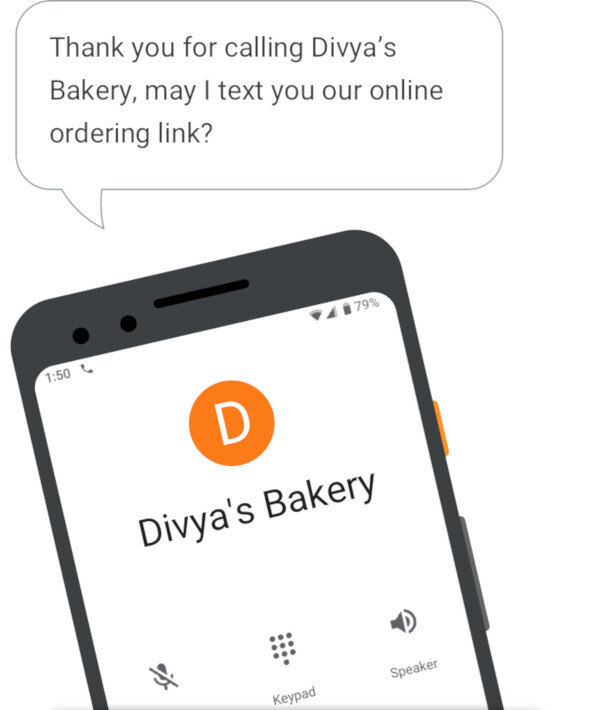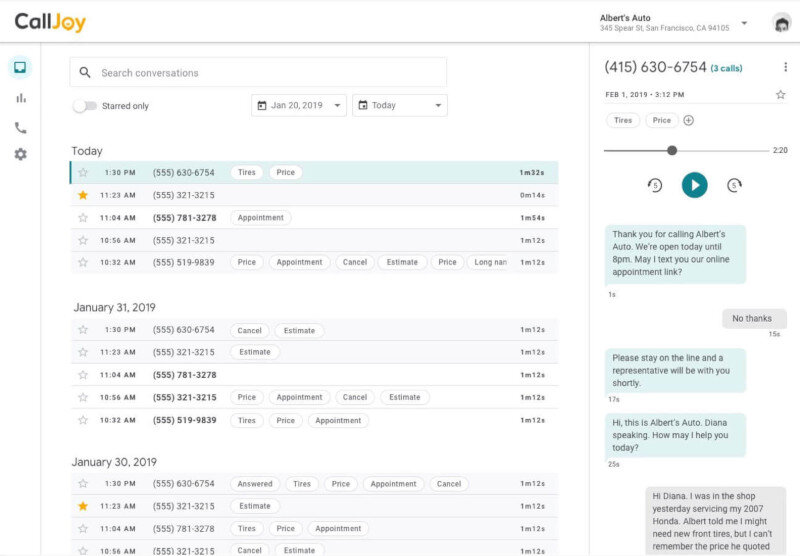ML/AI is coming to communications really fast. It is going to manifest is as automation in communications but also in other ways.

Me? I wanted to talk about automation and communications. But then Google released CallJoy, which was… automation and communications. And it shows where we’re headed quite clearly with a service that is butt simple, and yet… Google seems to be the first at it, at least when it comes to aiming for simplicity and a powerful MVP. Here’s where I took this article –
Ever since Google launched Duplex at I/O 2018 I’ve been wondering what’s next. Google came out with a new service called CallJoy – a kind of a voice assistant/agent for small businesses. Before I go into the age of automation and communications, let’s try to find out where machine learning and artificial intelligence can be found in CallJoy.
Interested in AI in communications? Tomorrow I’ll be hosting a webinar with Chad Hart on this topic – join us:
CallJoy and AI
What CallJoy does exactly?
From the CallJoy website, it looks that the following takes place: you subscribe for the service, pick a local phone number to use and you’re good to go.
When people call your business, they get greeted by a message (“this call is being recorded for whatever purposes” kind of a thing). Next, it can “share” information such as business hours and ask if the caller wants to do stuff over a web link instead of talking to a human. If a web link is what you want (think a “yes please” answer to whatever you hear on the phone when you call), then you’ll get an SMS with a URL. Otherwise, you’ll just get routed to the business’ “real” phone number to be handled by a human. All calls get recorded.
What machine learning aspects does this service use?
#1 – Block unwanted spam calls
Incoming spam calls can really harass small businesses. Being able to get less of these is always a blessing. It is also becoming a big issue in the US, one that brings a lot of attention and some attempts at solving it by carriers as well as other vendors.
I am not sure what blocking does Google do here and if it makes direct use of machine learning or not – it certainly can. The fact that all calls get handled by a chatbot means that there’s some kind of a “gating” process that a spam call needs to pass first. This in itself blocks at least some of them spam calls.
#2 – Call deflection, using a voice bot
Call deflection means taking calls and deflecting them – having automation or self service handle the calls instead of getting them to human agents. In the case of CallJoy, a call comes in. message plays out to the user (“this call is being recorded”). User is asked if he wants to do something over a text message:

If the user is happy with that, then an SMS gets sent to the caller and he can continue from there.
There’s a voicebot here that handles the user’s answer (yes, yap, yes please, sure, …) and makes that decision. Nothing too fancy.
This part was probably implemented by using Google’s Dialogflow.
Today, the focus is on restaurants and in order-taking for the call deflection part. It can be used for other scenarios, but that’s the one Google is starting with:

Notice how there’s “LEARN MORE” only on restaurants? All other verticals in the examples on the CallJoy websites make use of the rest of CallJoy’s capabilities. Restaurants is the only one where call deflection is highlighted through an integration with a third party The Ordering.app, who are, for all intent and purpose an unknown vendor. Here’s what LinkedIn knows about them:

(one has to wonder how and why this partner was picked – and who’s cousin owns this company)
Anyways – call deflection now is done via SMS, and integration with a third party. Future releases will probably have more integrations and third parties to work with – and with that more use cases covered.
Another aspect in the future might be making a decision of where to route a user to – what link to send him based on his intent. This is something that happens in terms of a focus in larger businesses today in their automation initiatives.
#3 – Call transcription
This one seems like table stakes.

Transcription is the source of gaining insights from voice.
CallJoy offers transcription of all calls made.
The purpose? Enable analytics for the small business, which is based on tags and BI (below).
This most certainly makes use of Google’s speech to text service
#4- Automated tagging on call transcripts
It seems CallJoy offers tagging of the transcripts or finding specific keywords.
There’s not much explanation or information about tags, but it seems to work by specifying search words and these become tags across the recordings of calls that were made.
Identifying tags might be a manual process or an automated one (it isn’t really indicated anywhere). The intent here is to allow businesses to indicate what they are interested in (order, inventory, reservation, etc.).
#5- Metrics and dashboards
Then there’s the BI part – business intelligence.
Take the information collected, place it on nice dashboards to show the users.
This gives small businesses insights on who is calling them, when and for what purpose. Sounds trivial and obvious, but how many small businesses have that data today?
No machine learning or AI here – just old school BI. The main difference is that the data collected along with the insights gleaned make use of machine learning.
Sum it up
To sum things up, CallJoy uses transcription and makes basic use of Dialogflow to build a simple voicebot (probably single step – question+answer) and wraps it up in a solution that is pretty darn useful for businesses.
It does that for $39 a month per location. Very little to lose by trying it out…
A different route

Where most AI vendors are targeting large enterprises, Google decided to take the route of the small business. Trying to solve their problems. The challenge here is that there’s not enough data within a single business – and not enough money for running a data science project.
Google figured out how to cater for this audience with the tools they had at hand, without using the industry’s gold standard for call centers or try a fancy catch-all solution to answer and manage all calls.
The industry’s gold standard? An IVR. Get a person to menu-hell until he reaches what he needs.
Catch-all solution? Put an AI that can handle 90%+ if the call scenarios on its own automatically.
Both an IVR and mapping call scenarios means customizing the solution, which suggests longer onboarding with a more complicated solution. By taking the route of simplification Google made it possible to cater for small businesses.
A virtuous cycle
Google gains here twice.
Once by attracting small businesses to its service.
Twice by collecting these calls and the intents and tags businesses put. This ends up gaining more insights for Google, turning them into additional features, which later on attracts yet more businesses to a better CallJoy business.
It is all about automation
Here’s what you’ll find on the FAQ page of CallJoy:
With CallJoy, you’ll be able to:
- Gain powerful insights with audio recordings and searchable text transcripts of all connected incoming calls.
- Make better business decisions with metrics such as peak call times, new vs. returning callers, and conversation topics.
- Easily direct callers via text message text to place an order or schedule an appointment online, increasing sales while freeing up your staff.
Most of it talks about improving a service by automating much of what takes place. Which is what the whole notion of AI and machine learning is with communications. Well… mostly. There are a few other areas like quality optimization.
The whole AI gold rush we see today in the communications space boils down to the next level of automation we’re getting into with communications. In many cases this is about machine helping humans and not really machine replacing humans – not for many of the use cases and interactions. That will probably come later 🙂
Interested in AI in communications? Tomorrow I’ll be hosting a webinar with Chad Hart on this topic – join us:
